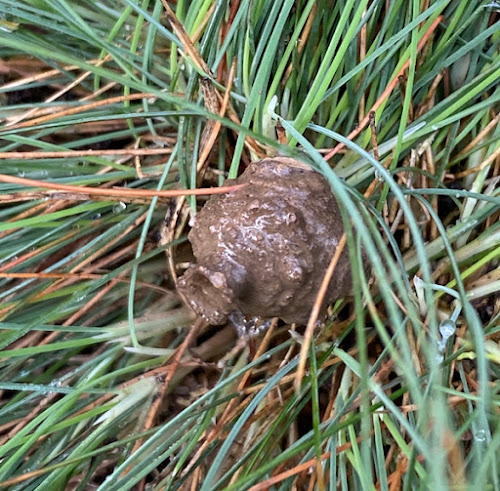After our few days resting and celebrating Jackie Birthday in Normandie where we had our first real rain of the holiday we didn't really add anything new but I did managed to get a shot of a Zitting Cisticola.
Not such a bad bird to finish the holiday with. We made our way back to Cherbourg and had a pretty uneventful crossing back to Poole.
We finished our holiday with 116 species of bird, 37 Butterfly and 9 Odonata.
The rest of June was spent catching up on things we needed to do around the garden and bungalow and for me getting back into the surveys on the Purbeck Heath National Nature Reserve (PHNNR) and Reptiles surveys at Arne. I also lead a few of the RSPB Nightjar walks which I have to say very well attended and the Nightjar performed well. With often a few plus species like Spoonbill, Woodlark, Barn Owl and even a Hobby putting in an appearance on my walks. We also went back to doing Osprey watch with Birds of Poole Harbour with the three young doing well after hatching whilst we were away.
We had visits to Badbury Rings, Wareham Forest, Longham Lakes and Holton Lee the latter was a Heathland bird survey. We didn't record anything outstanding and only managed 64 species before the end of the month.
July followed in much the same vein with surveys for me and then local birding with Jackie. Though on the 7th July Jackie and I headed off to Wales to visit Jackie's Aunt and had a long days birding Anglesea catching up with Black Guillemot, Chough and Puffin at South Stack. We also visited Cemlyn Bay to check out the tern colony there, though they had been effected by bird flu it had appeared to have passed and there were still good numbers of Arctic, Common and Sandwich Tern breeding also a pair of Avocet which was the first Welsh breeding record with three youngsters.
 |
| Arctic and Common Terns - Cemlyn Bay Wales © Nick Hull |
Back in Dorset again we didn't get out to do much birding, but I was still getting out doing survey work on the PHNNR doing Pond Surveys, which include checking for counting Dragon and Damselflies, Raft Spider, Pond Hopper, and one or two pond plant species. Also counting numbers of Purbeck Mason Wasp, Heath Tiger Beetle and Heath Potter Wasp and any of the native reptiles and anything else that looks interesting which may not necessarily be scarce or rare but not recorded before or often. A few shots of the species mentioned though they have been represented here before but it will save you time looking them up.
 |
| Heath Potter Wasp Eumenes coarctatus flying off with clay/mud to make her nesting pot © Nick Hull |
 |
| Freshly completed Heath Potter Wasp Eumenes coarctatus pot © Nick Hull |
Heath Tiger Beetle are a ferocious predator as a larvae and as well as an adult. The larvae sit in its burrow and ambushes anything that passes by, drags it in and eats it.
 |
| Heath Tiger Beetle Cicindela sylvatica at the entrance to its burrow awaiting prey © Nick Hull |
The adult beetle is a bit like a cheetah they run really fast to catch prey. They can also fly very well but doesn't fly very far usually landing a metre or so away when disturbed.
 |
| Adult male Heath Tiger Beetle Cicindela sylvatica © Nick Hull |
 |
| Raft Spider Dolomedes fimbriatus waiting for prey on a small pond © Nick Hull |
 |
| The diminutive Yellow Centaury Cicendia filiformis © Nick Hull |
 |
| Lesser Butterfly Orchid Platanthera bifolia © Nick Hull |
There is also two bee-fly species that we record which are found on the heathlands, as they are parasitic one on mining bees and the other on a scarce species of Ammophila Wasp. They are the Heath Bee-fly and the Mottled Bee-fly.
We also helped out on a couple of bird boats with Birds of Poole Harbour on the Osprey boats which cruise the Wareham channel where we saw 7 different Osprey and two White-tailed Eagle which have been residing in the Wareham Channel area for over a year now though they do go off on a jolly on occasions elsewhere.
On one of the boats we had time and good weather to cruise up the Wytch Channel along Shipstal Beach and view the small gull and tern roost and was able to catch up with the presumed returning Forster's Tern in the roost.
 |
| Distant shot of the Forster's Tern on the marsh roost at Shipstal Beach © Nick Hull |
 |
| Forster's Tern - Arne Shipstal Beach © Nick Hull |
From the birding perspective by the end of the month we had recorded 84 species from very few locations our year list stands at just 183 and we still have some birds that we haven't connected with which are relatively common so hopefully August will see us picking up a few migrants and catching up on a few we have missed.







No comments:
Post a Comment